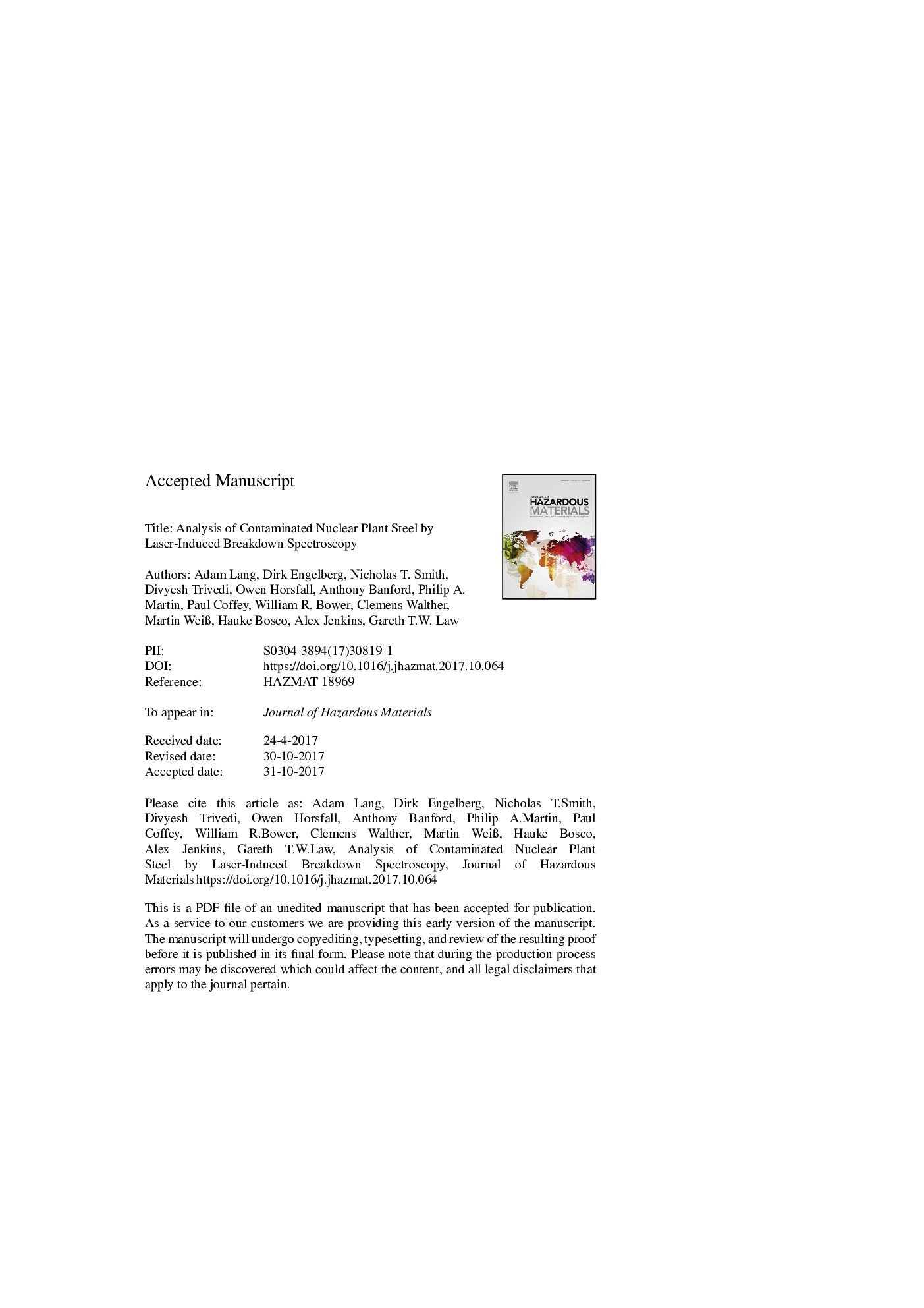| Article ID | Journal | Published Year | Pages | File Type |
|---|---|---|---|---|
| 6969312 | Journal of Hazardous Materials | 2018 | 22 Pages |
Abstract
Laser Induced Breakdown Spectroscopy (LIBS) has the potential to allow direct, standoff measurement of contaminants on nuclear plant. Here, LIBS is evaluated as an analytical tool for measurement of Sr and Cs contamination on type 304 stainless steel surfaces. Samples were reacted in model acidic (PUREX reprocessing) and alkaline (spent fuel ponds) Sr and Cs bearing liquors, with LIBS multi-pulse ablation also explored to measure contaminant penetration. The Sr II (407.77 nm) and Cs I (894.35 nm) emission lines could be separated from the bulk emission spectra, though only Sr could be reliably detected at surface loadings >0.5 mg cmâ2. Depth profiling showed decay of the Sr signal with time, but importantly, elemental analysis indicated that material expelled from LIBS craters is redistributed and may interfere in later laser shot analyses.
Keywords
Related Topics
Physical Sciences and Engineering
Chemical Engineering
Chemical Health and Safety
Authors
Adam Lang, Dirk Engelberg, Nicholas T. Smith, Divyesh Trivedi, Owen Horsfall, Anthony Banford, Philip A. Martin, Paul Coffey, William R. Bower, Clemens Walther, Martin WeiÃ, Hauke Bosco, Alex Jenkins, Gareth T.W. Law,
